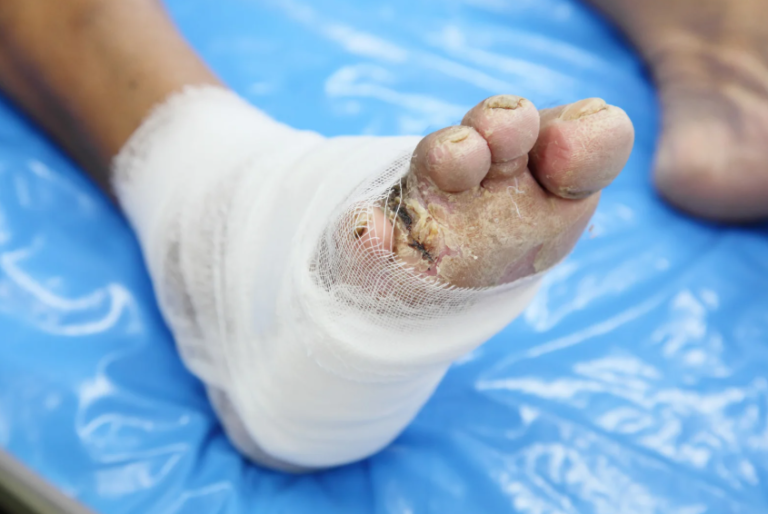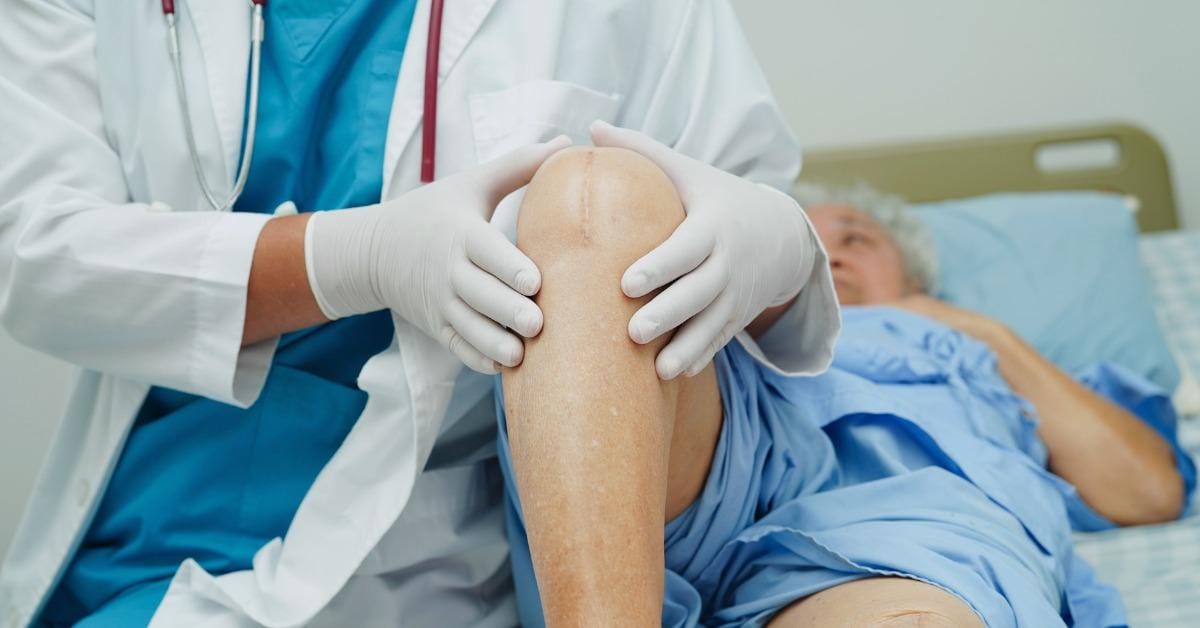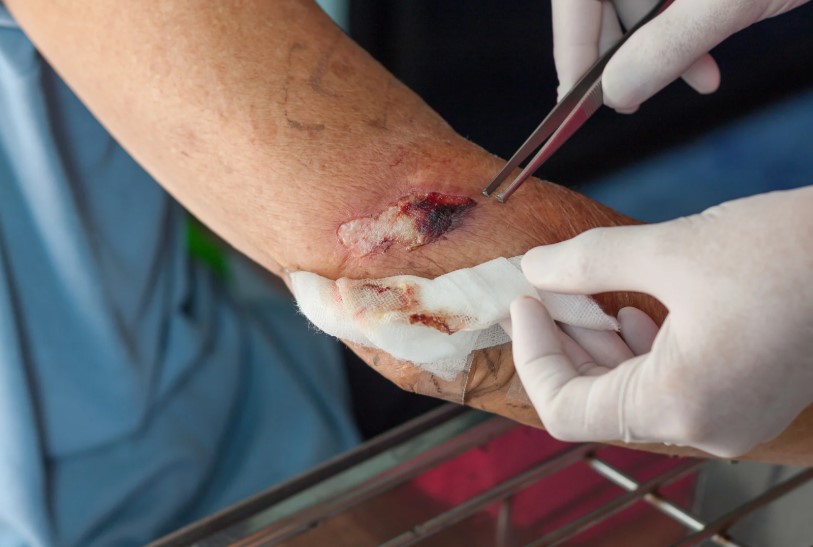Diabetic foot ulcers are a common and serious complication for individuals living with diabetes. If left untreated, they can lead to severe infections, extended hospital stays, and in the worst cases, amputation. Managing diabetic foot ulcers requires a multi-faceted approach that combines prevention, timely treatment, and expert care. That’s where the expertise of a Specialist Doctor for Wounds, like Dr. Lou Mervyn Tec at Kalingap Wound Care Clinic, comes in. Dr. Tec’s comprehensive approach to wound care can significantly improve healing and prevent complications. Here are some essential diabetic foot ulcer management tips directly from a Specialist Doctor for Wounds to help you maintain healthy feet and manage wounds effectively.
Understanding Diabetic Foot Ulcers
Diabetic foot ulcers are open sores that form on the feet due to poor circulation, nerve damage, and high blood sugar levels. They often develop unnoticed because diabetic neuropathy reduces sensation, leading people to miss early signs of injury. Poor circulation can also make it harder for wounds to heal properly. If you have diabetes, it’s crucial to monitor your feet carefully and seek immediate care if an ulcer forms. Early intervention by a Specialist Doctor for Wounds can prevent further complications and speed up healing.
Causes of Diabetic Foot Ulcers
The primary cause of diabetic foot ulcers lies in the body’s inability to properly heal wounds, which is exacerbated by diabetes. Here’s a closer look at the common causes:
Poor Circulation: Diabetes can damage the blood vessels, reducing blood flow to the extremities. This limited circulation makes it harder for your body to supply oxygen and nutrients to the wound, slowing down the healing process.
Nerve Damage (Neuropathy): One of the most dangerous effects of diabetes is nerve damage, or neuropathy. This reduces the feeling in the feet, so you may not notice small injuries like blisters or cuts, which can quickly turn into ulcers if not treated promptly.
Infection: Wounds on the feet are highly susceptible to infection. Since diabetics may have weakened immune systems, infections can spread quickly, causing further complications and, in severe cases, requiring amputation.
Early Signs of Diabetic Foot Ulcers
Recognizing the early signs of a diabetic foot ulcer can make all the difference in preventing it from getting worse. Look for:
Visible Symptoms: Check your feet daily for redness, swelling, or any new wounds. You might also notice blisters or small cuts that don’t seem to heal.
Pain and Tenderness: Though neuropathy often dulls pain, you may still feel pain or tenderness around the wound site if it has become infected.
Delayed Healing: If a small wound or blister takes longer than usual to heal, it may be a sign that a diabetic foot ulcer is forming. This is where seeing a Specialist Doctor for Wounds like Dr. Lou Mervyn Tec at Kalingap Wound Care Clinic becomes essential.
Expert Tips for Diabetic Foot Ulcer Management
Managing diabetic foot ulcers requires vigilance and the right care. Below are some tips from a Specialist Doctor for Wounds to help you manage and treat foot ulcers effectively:
Tip #1: Regular Foot Inspections
It’s crucial to inspect your feet daily for any signs of injury, including cuts, blisters, or swelling. Early detection of a foot ulcer allows for quicker intervention and reduces the risk of complications. If you notice anything unusual, seek medical attention immediately. The team at Kalingap Wound Care Clinic specializes in diabetic foot ulcer management and will provide you with a thorough assessment.
Tip #2: Maintain Blood Sugar Control
Blood sugar control plays a vital role in wound healing. When blood sugar levels are elevated, they can impair circulation and weaken the immune system, making it harder for your body to fight infections. Keeping your blood sugar within the recommended range can help wounds heal faster and reduce the risk of further complications. Work closely with your healthcare team to monitor your blood sugar levels and follow a healthy diet and lifestyle.
Tip #3: Keep the Feet Clean and Dry
Clean and dry feet are less prone to infection. Wash your feet daily with lukewarm water and mild soap, ensuring that they’re completely dry before putting on socks or shoes. Moisture can encourage bacteria growth, so avoid soaking your feet for long periods. Kalingap Wound Care Clinic can guide you on the right products and foot care habits to prevent infections and promote optimal healing.
Tip #4: Proper Footwear
Wearing the right shoes is critical for preventing pressure sores and reducing the risk of foot ulcers. Tight shoes or ill-fitting footwear can cause friction, leading to blisters or sores. Always choose well-fitted shoes that provide ample space for your toes, offer good arch support, and reduce pressure on the feet. If you’re unsure about the best footwear for diabetics, Kalingap Wound Care Clinic offers advice on choosing the right shoes to prevent ulcers.
Tip #5: Seek Professional Help Early
As soon as you notice any signs of a foot ulcer or delayed healing, it’s important to consult a Specialist Doctor for Wounds. Dr. Lou Mervyn Tec, with his extensive experience, will conduct a thorough examination and recommend an individualized treatment plan. Early intervention can prevent infection, minimize complications, and even save your limbs.
Advanced Treatment Options for Diabetic Foot Ulcers
While prevention is essential, there are also advanced treatments available to help manage and heal diabetic foot ulcers. At Kalingap Wound Care Clinic, Dr. Tec uses state-of-the-art treatments tailored to each patient’s needs:
Ultrasonic-Assisted Debridement: This technique involves using ultrasonic waves to remove non-viable tissue from the wound, creating an optimal healing environment. It’s gentle yet effective, reducing pain and promoting faster healing.
Negative Pressure Wound Therapy (NPWT): NPWT uses a vacuum-assisted device to enhance blood flow and promote tissue regeneration. It accelerates healing by drawing out excess fluid and increasing circulation to the wound site.
Infection Control: A Specialist Doctor for Wounds at Kalingap Wound Care Clinic will monitor for signs of infection and prescribe the appropriate antibiotics or topical treatments to prevent complications.
Personalized Care Plans: Dr. Tec’s approach involves creating a personalized care plan tailored to your specific needs, whether it’s treating an existing ulcer or preventing future ones.
Preventing Diabetic Foot Ulcers
Prevention is always better than treatment, and it’s particularly true for diabetic foot ulcers. Preventive strategies include:
Educating Patients on Prevention: Learning proper foot care techniques and the importance of regular foot inspections can help you spot potential problems early. Dr. Tec and his team at Kalingap Wound Care Clinic provide educational resources to help diabetic patients protect their feet.
Regular Check-Ups: Regular check-ups with a Specialist Doctor for Wounds ensure that any potential ulcers are caught early before they become a major issue. Early diagnosis and treatment make a significant difference in preventing ulcers from worsening.
Foot Care Workshops: Kalingap Wound Care Clinic also offers workshops that teach diabetic patients how to care for their feet, how to spot early warning signs, and how to avoid pressure ulcers or infections.
Why Choose Kalingap Wound Care Clinic for Diabetic Foot Ulcer Management
Choosing the right clinic for your wound care is crucial to achieving the best possible results. Kalingap Wound Care Clinic is a trusted name in the Philippines for diabetic foot ulcer management. Dr. Lou Mervyn Tec and his team provide expert care, leveraging advanced wound care technology like NPWT and ultrasonic-assisted debridement to ensure fast and efficient healing. The clinic is committed to offering compassionate, affordable, and personalized care, making it the best place for individuals dealing with diabetic foot ulcers.
Takeaway
If you have diabetes and are concerned about foot ulcers or wound care, don’t wait for complications to arise. Book an appointment today with Dr. Lou Mervyn Tec at Kalingap Wound Care Clinic and take the first step toward effective diabetic foot ulcer management. Early intervention can make all the difference in preventing infections and ensuring your feet stay healthy.
FAQs
How do I know if I have a diabetic foot ulcer?
Symptoms of a diabetic foot ulcer include visible sores, blisters, swelling, and delayed healing. If you notice any of these signs, it’s important to consult a Specialist Doctor for Wounds immediately.
Can diabetic foot ulcers heal on their own?
Diabetic foot ulcers can take longer to heal and may not heal properly without professional treatment. It’s essential to seek care from a Specialist Doctor for Wounds to ensure proper healing and prevent complications.
How can I prevent diabetic foot ulcers?
Regular foot inspections, maintaining blood sugar control, keeping feet clean and dry, wearing proper footwear, and seeking early treatment are key preventive measures. Kalingap Wound Care Clinic offers resources to help you manage foot health effectively.
Why should I choose Kalingap Wound Care Clinic for my wound care?
Kalingap Wound Care Clinic is led by Dr. Lou Mervyn Tec, a renowned Specialist Doctor for Wounds. The clinic offers advanced treatments like NPWT and ultrasonic-assisted debridement, along with compassionate, personalized care for diabetic foot ulcers.






